-
 Bitcoin
Bitcoin $106,684.2039
-0.52% -
 Ethereum
Ethereum $2,399.8703
-0.98% -
 Tether USDt
Tether USDt $1.0003
0.01% -
 XRP
XRP $2.0879
-1.38% -
 BNB
BNB $643.7981
-0.29% -
 Solana
Solana $141.0383
-0.39% -
 USDC
USDC $0.9999
0.01% -
 TRON
TRON $0.2718
0.30% -
 Dogecoin
Dogecoin $0.1588
-0.85% -
 Cardano
Cardano $0.5472
-1.45% -
 Hyperliquid
Hyperliquid $36.1292
-0.48% -
 Bitcoin Cash
Bitcoin Cash $502.5414
2.20% -
 Sui
Sui $2.7016
3.59% -
 Chainlink
Chainlink $12.8198
-2.00% -
 UNUS SED LEO
UNUS SED LEO $9.0559
0.58% -
 Stellar
Stellar $0.2333
-0.73% -
 Avalanche
Avalanche $17.2524
0.16% -
 Toncoin
Toncoin $2.8273
0.70% -
 Shiba Inu
Shiba Inu $0.0...01112
-0.86% -
 Litecoin
Litecoin $83.4315
-0.94% -
 Hedera
Hedera $0.1439
0.75% -
 Monero
Monero $307.7259
-1.44% -
 Bitget Token
Bitget Token $4.6301
3.49% -
 Dai
Dai $0.9998
0.01% -
 Ethena USDe
Ethena USDe $1.0001
0.02% -
 Polkadot
Polkadot $3.3102
0.39% -
 Pi
Pi $0.5662
0.55% -
 Uniswap
Uniswap $6.8290
0.70% -
 Aave
Aave $256.8983
2.19% -
 Pepe
Pepe $0.0...08994
-2.79%
Is it a trap to lure more people if the daily limit is opened low and moved low the next day?
A coin hitting its daily limit may signal strong selling pressure, but consecutive drops could be due to market conditions or manipulation tactics by large players.
Jun 27, 2025 at 08:21 pm
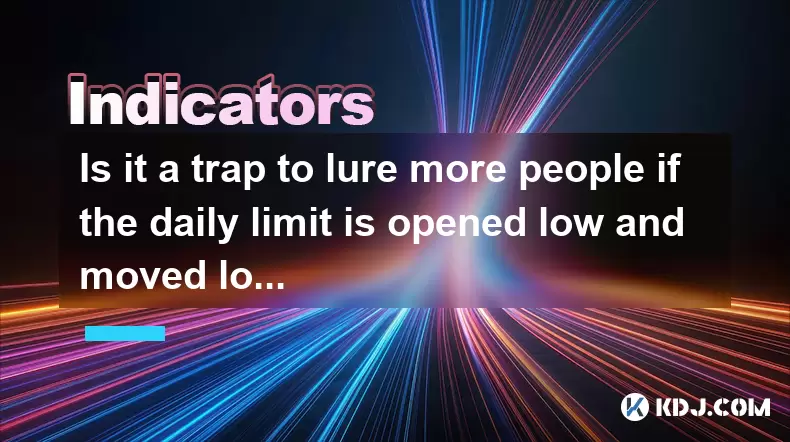
Understanding the Mechanics of Daily Limits in Cryptocurrency Trading
In cryptocurrency trading, daily limits refer to the maximum percentage by which a digital asset’s price can rise or fall within a 24-hour period. These limits are often implemented by exchanges to prevent extreme volatility and protect traders from sudden, drastic losses. When a coin hits its daily limit on the downside, it means that its price has dropped to the lowest level allowed by the exchange's rules for that day.
Some traders may perceive certain patterns as suspicious when they observe a low daily limit opening followed by an even lower movement the next day. This raises concerns about whether such price behavior is a deliberate trap designed to lure more participants into the market.
What Does It Mean When a Coin Opens at Its Daily Limit?
When a cryptocurrency opens at its daily limit, especially on a negative note, it typically indicates strong selling pressure. This could be due to various reasons such as:
- Negative news or regulatory developments
- Market panic triggered by broader economic indicators
- Technical sell-offs initiated by algorithmic trading bots
However, if the price continues to drop the next day, hitting or nearing the limit again, some traders begin to suspect foul play. The idea that this might be a trap set by large players (whales) to manipulate retail traders into selling their holdings at unfavorable prices becomes a topic of discussion in online forums and social media groups.
Analyzing the Pattern: Low Limit Opening Followed by Further Decline
Let’s break down what happens during such a sequence of events:
- On Day One, the price drops sharply and hits the daily limit. Retail investors panic and sell.
- On Day Two, the price opens lower than the previous day’s close and again trends downward, possibly hitting the daily limit once more.
This repeated pattern can lead many inexperienced traders to believe that there’s a coordinated effort to drive the price down further. However, several factors must be considered before labeling this behavior as a trap:
- Market sentiment: If broader market conditions are bearish, multiple assets may exhibit similar behavior without any manipulation.
- Exchange-specific rules: Some platforms have dynamic daily limits that adjust based on volatility, which can cause consecutive days of limit-down scenarios.
- Whale activity: Large holders moving significant amounts of tokens can create artificial price swings, but proving intent behind such moves is difficult.
Is There Evidence of a Trap Being Set?
To determine whether a trap is being laid, one must look beyond just price action and examine additional data points:
- Volume spikes: A sudden surge in trading volume during a limit-down scenario may indicate large orders being executed, potentially by institutional players.
- Order book analysis: Deep order books with large buy walls disappearing quickly can suggest manipulative tactics like spoofing.
- Social media coordination: In some cases, coordinated pump-and-dump schemes use Telegram or Discord groups to orchestrate buying or selling pressure.
While these signs don’t confirm a trap outright, they provide context that helps traders make more informed decisions rather than reacting emotionally to short-term price movements.
How Retail Traders Can Protect Themselves
Retail traders should adopt strategies that help them navigate volatile markets without falling prey to potential traps:
- Avoid panic selling: Just because a coin hits its daily limit doesn’t mean it will continue falling indefinitely. Wait for confirmation of trend continuation before making decisions.
- Use stop-loss orders wisely: Setting stop-losses too close to current price levels can trigger automatic exits during temporary dips.
- Diversify across exchanges: Not all platforms enforce daily limits. Monitoring price differences across exchanges can offer better entry or exit opportunities.
- Stay informed: Track news sources, official announcements, and community discussions to understand the fundamentals behind price movements.
These practices empower traders to remain rational and strategic, reducing the likelihood of being manipulated by external forces.
Psychological Impact of Repeated Daily Limit Breaches
Repeated instances of limit breaches can have a profound psychological effect on traders. Fear of missing out (FOMO) and fear, uncertainty, and doubt (FUD) become amplified, leading to irrational decision-making. Many traders who witness a coin hitting the daily limit multiple times in succession may feel pressured to either sell off their holdings or enter short positions, believing the worst is yet to come.
This emotional response is precisely what manipulators aim to exploit. By triggering mass sell-offs or aggressive shorting, they can push the price even lower before buying back in at depressed levels. Understanding how emotions influence trading behavior is crucial in avoiding unnecessary losses.
Frequently Asked Questions
Q1: Can daily limits be removed or adjusted by exchanges arbitrarily?
Yes, some exchanges have the authority to adjust daily limits based on market conditions, liquidity, or risk management policies. However, such changes are usually communicated beforehand and follow specific guidelines outlined by the platform.
Q2: Are all cryptocurrencies subject to daily limits?
No, not all cryptocurrencies have daily limits. It depends on the exchange listing the token and its internal risk control mechanisms. Major coins like Bitcoin and Ethereum rarely have strict daily limits due to their high liquidity.
Q3: How can I check if a cryptocurrency has a daily limit on a specific exchange?
You can review the trading rules section on the exchange’s official website or contact their customer support for detailed information regarding daily price fluctuation restrictions.
Q4: Is hitting the daily limit always a bad sign for a cryptocurrency?
Not necessarily. While frequent limit breaches can indicate instability or negative sentiment, they can also occur during periods of high interest or speculation. It’s important to analyze the broader context before drawing conclusions.
Disclaimer:info@kdj.com
The information provided is not trading advice. kdj.com does not assume any responsibility for any investments made based on the information provided in this article. Cryptocurrencies are highly volatile and it is highly recommended that you invest with caution after thorough research!
If you believe that the content used on this website infringes your copyright, please contact us immediately (info@kdj.com) and we will delete it promptly.
- Queenstown Tech Super-charging: A Glimpse into the Future
- 2025-06-28 00:30:12
- Dogecoin, Ethereum, Solana: Decoding the Crypto Climate in the Big Apple
- 2025-06-28 00:47:15
- Tokenized Securities in Hong Kong: On-Chain Revolution?
- 2025-06-28 01:30:12
- SHIB Price Target: Can Shiba Inu Achieve a Technical Rally to $0.000081?
- 2025-06-28 01:30:12
- Gotta Go Fast! Sonic the Hedgehog Dashes into Magic: The Gathering's Secret Lair!
- 2025-06-28 01:35:12
- Ripple, Ondo, and Unstaked: Navigating Crypto's Choppy Waters
- 2025-06-28 01:50:12
Related knowledge
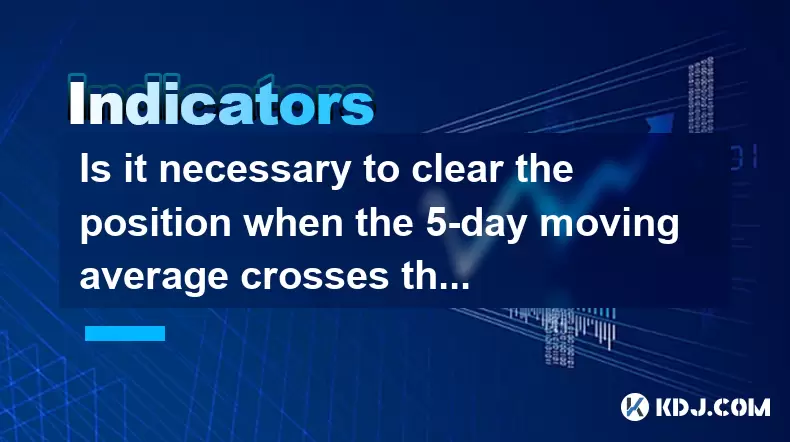
Is it necessary to clear the position when the 5-day moving average crosses the 10-day moving average?
Jun 27,2025 at 07:21pm
Understanding the 5-Day and 10-Day Moving AveragesIn the realm of technical analysis within the cryptocurrency market, moving averages play a crucial role in identifying trends and potential reversal points. The 5-day moving average (MA) and 10-day moving average are two of the most commonly used short-term indicators by traders. These tools smooth out ...
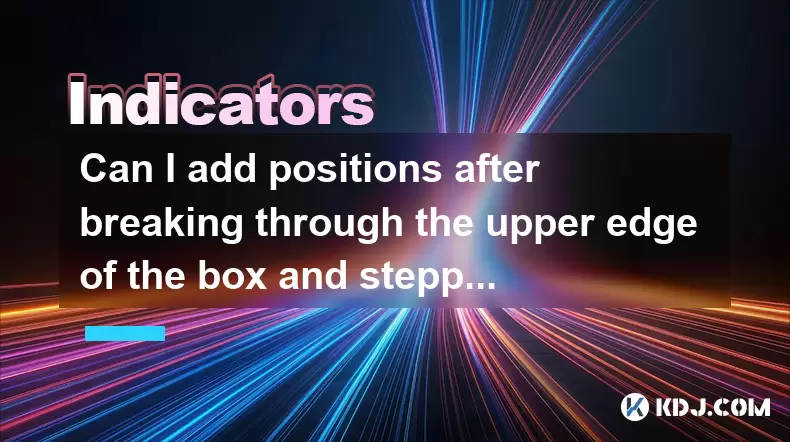
Can I add positions after breaking through the upper edge of the box and stepping back without breaking?
Jun 27,2025 at 09:56pm
Understanding the Box Breakout StrategyIn cryptocurrency trading, box breakout strategies are commonly used by technical analysts to identify potential price movements. A box, or a trading range, refers to a period where the price of an asset moves within two horizontal levels — the support (lower boundary) and resistance (upper boundary). When the pric...
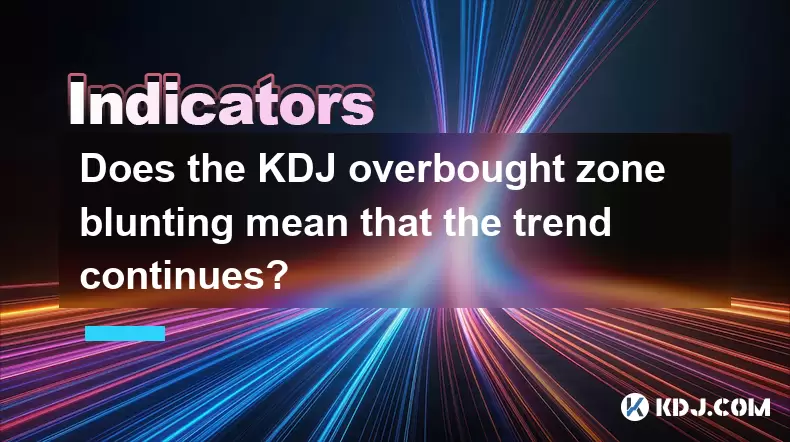
Does the KDJ overbought zone blunting mean that the trend continues?
Jun 27,2025 at 03:35pm
Understanding the KDJ Indicator in Cryptocurrency TradingThe KDJ indicator, also known as the stochastic oscillator, is a popular technical analysis tool used by traders to identify overbought or oversold conditions in asset prices. In the cryptocurrency market, where volatility is high and trends can change rapidly, understanding how to interpret the K...
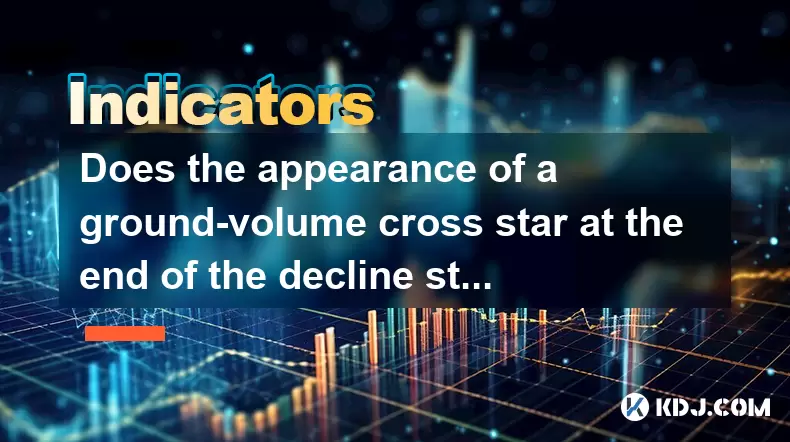
Does the appearance of a ground-volume cross star at the end of the decline stop the decline?
Jun 27,2025 at 10:35pm
Understanding the Ground-Volume Cross Star PatternIn technical analysis, candlestick patterns play a crucial role in identifying potential market reversals. One such pattern is the ground-volume cross star. This pattern typically appears at the bottom of a downtrend and is characterized by a small-bodied candle with long upper and lower shadows, accompa...
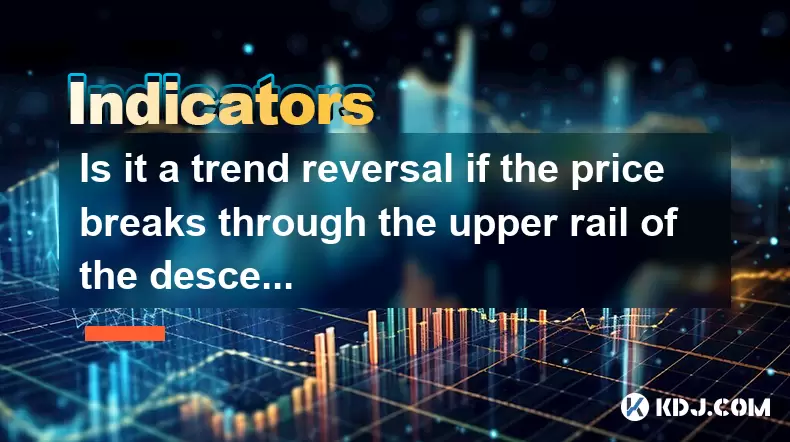
Is it a trend reversal if the price breaks through the upper rail of the descending channel and then steps back without breaking?
Jun 27,2025 at 05:35pm
Understanding the Descending Channel PatternA descending channel is a technical analysis pattern formed by two parallel downward-sloping trendlines, one acting as resistance and the other as support. This pattern typically indicates a continuation of a downtrend, where price action oscillates between these two boundaries. Traders often look for breakout...
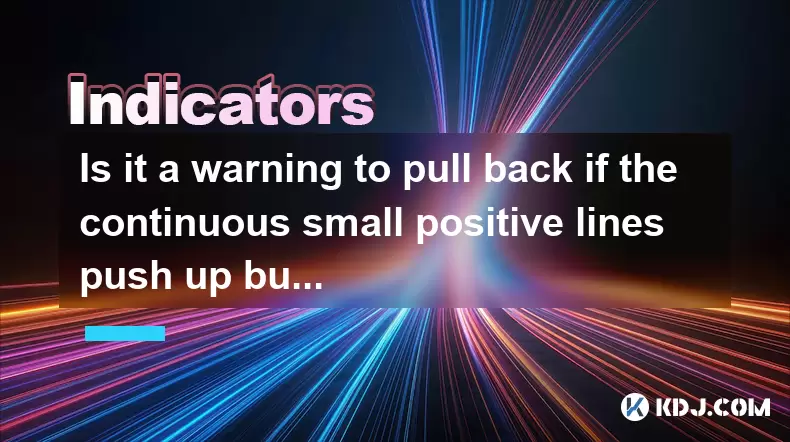
Is it a warning to pull back if the continuous small positive lines push up but the volume is insufficient?
Jun 27,2025 at 05:28pm
Understanding the Pattern: Continuous Small Positive LinesIn technical analysis, continuous small positive lines refer to a series of candlesticks where each candle closes slightly higher than its open. These candles usually have short wicks and indicate a gradual upward movement in price. Traders often interpret this pattern as a sign of steady buying ...

Is it necessary to clear the position when the 5-day moving average crosses the 10-day moving average?
Jun 27,2025 at 07:21pm
Understanding the 5-Day and 10-Day Moving AveragesIn the realm of technical analysis within the cryptocurrency market, moving averages play a crucial role in identifying trends and potential reversal points. The 5-day moving average (MA) and 10-day moving average are two of the most commonly used short-term indicators by traders. These tools smooth out ...

Can I add positions after breaking through the upper edge of the box and stepping back without breaking?
Jun 27,2025 at 09:56pm
Understanding the Box Breakout StrategyIn cryptocurrency trading, box breakout strategies are commonly used by technical analysts to identify potential price movements. A box, or a trading range, refers to a period where the price of an asset moves within two horizontal levels — the support (lower boundary) and resistance (upper boundary). When the pric...

Does the KDJ overbought zone blunting mean that the trend continues?
Jun 27,2025 at 03:35pm
Understanding the KDJ Indicator in Cryptocurrency TradingThe KDJ indicator, also known as the stochastic oscillator, is a popular technical analysis tool used by traders to identify overbought or oversold conditions in asset prices. In the cryptocurrency market, where volatility is high and trends can change rapidly, understanding how to interpret the K...

Does the appearance of a ground-volume cross star at the end of the decline stop the decline?
Jun 27,2025 at 10:35pm
Understanding the Ground-Volume Cross Star PatternIn technical analysis, candlestick patterns play a crucial role in identifying potential market reversals. One such pattern is the ground-volume cross star. This pattern typically appears at the bottom of a downtrend and is characterized by a small-bodied candle with long upper and lower shadows, accompa...

Is it a trend reversal if the price breaks through the upper rail of the descending channel and then steps back without breaking?
Jun 27,2025 at 05:35pm
Understanding the Descending Channel PatternA descending channel is a technical analysis pattern formed by two parallel downward-sloping trendlines, one acting as resistance and the other as support. This pattern typically indicates a continuation of a downtrend, where price action oscillates between these two boundaries. Traders often look for breakout...

Is it a warning to pull back if the continuous small positive lines push up but the volume is insufficient?
Jun 27,2025 at 05:28pm
Understanding the Pattern: Continuous Small Positive LinesIn technical analysis, continuous small positive lines refer to a series of candlesticks where each candle closes slightly higher than its open. These candles usually have short wicks and indicate a gradual upward movement in price. Traders often interpret this pattern as a sign of steady buying ...
See all articles























































































